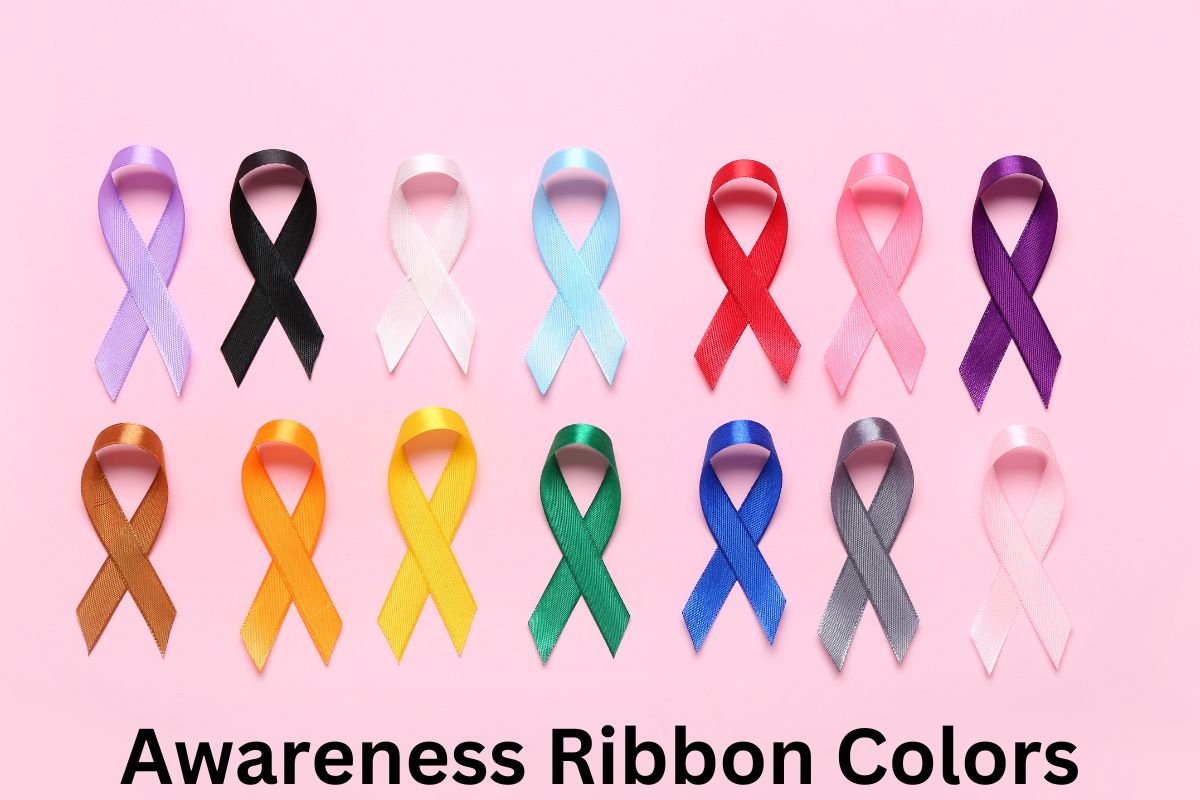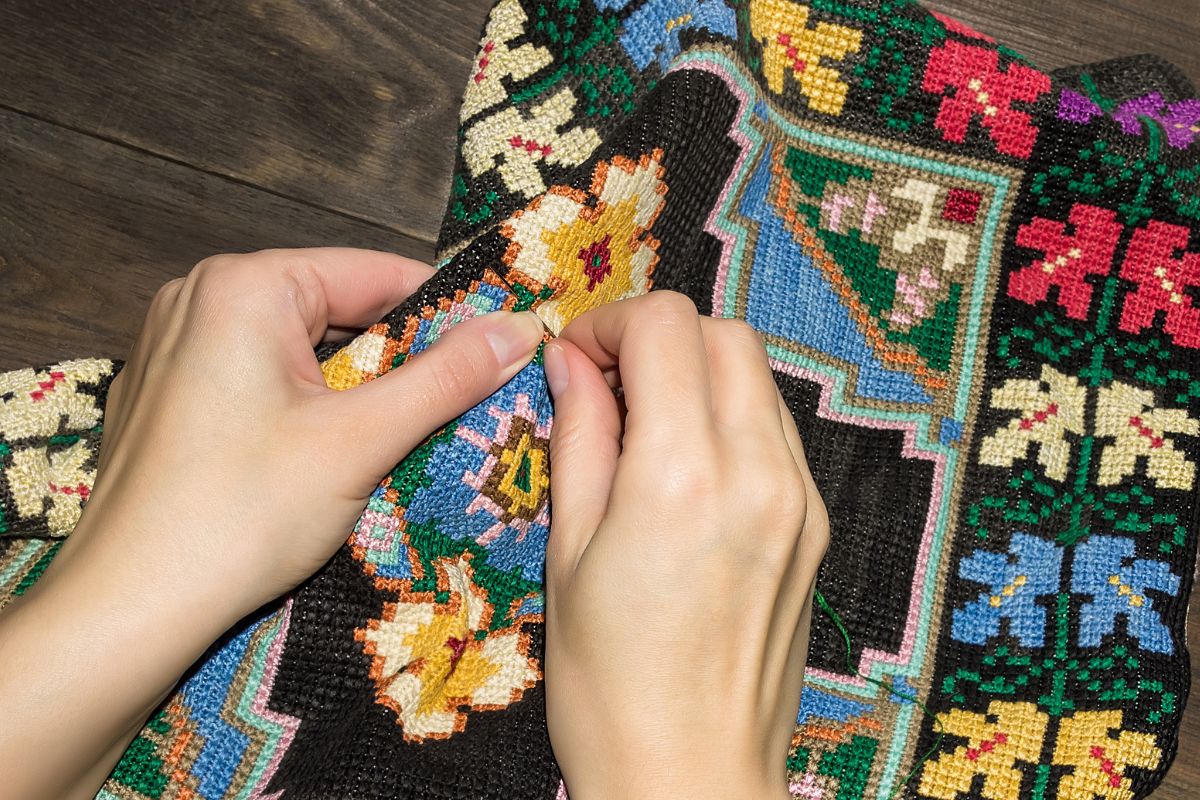Awareness ribbons have become a unifying symbol to convey support and raise consciousness for various health issues and causes. I see them as a powerful visual representation that crosses language barriers and cultural divides, allowing individuals and communities to express solidarity and commitment to a cause. These colored ribbons are now firmly embedded in the social fabric, often spotted at events, pinned on clothes, and displayed on vehicles, having different hues that are designated for different health conditions and important social causes.
I understand that the practice of using ribbons as a means to advocate or show support is not new; it has evolved over the years and has expanded to encompass a multitude of causes. Each color and pattern corresponds to a different issue, from common illnesses to rare diseases, societal issues, and personal hardships. For instance, a pink ribbon is universally recognized for breast cancer awareness, whereas a red ribbon is commonly associated with AIDS and HIV support. The scope of these ribbons in promoting awareness is vast, and their impact on fundraising, education, and personal support is significant.
In my exploration of this topic, I am aware of how important it is to respect the meaning of each ribbon color. It is a means to connect with others who are facing similar challenges and to educate the public on topics that may not receive widespread attention. My approach is to remain accurate and sensitive to the significance behind each color as a sign of respect for those the ribbons represent.
Understanding Awareness Ribbons
Awareness ribbons serve as symbols for various causes and bear different colors and patterns to represent specific issues. I’ll provide clarity on their meanings, origin, and cultural significance.
Meaning and Purpose
Awareness ribbons are pieces of colored ribbon folded into a loop, or representations of such, which I and others wear to signal support or raise consciousness for a cause. Each color and pattern is associated with different issues. For instance, a purple ribbon can signify support for pancreatic cancer, epilepsy, and Alzheimer’s disease, along with attention to ADHD and Crohn’s disease. A light blue ribbon represents children in foster care and men’s health, while a dark blue one is associated with colon cancer awareness.
History and Origin
The history of awareness ribbons dates back to times where I might tie ribbons around a tree to remember soldiers fighting in wartime. The usage as a modern symbol began in the 1970s with the yellow ribbon, which represented support for hostages in Iran. Since then, the concept has evolved, and different ribbon colors have emerged to highlight an array of causes.
Cultural Significance
In terms of cultural significance, these ribbons have become a universal method for me and others to demonstrate solidarity across cultural boundaries. They engage a diverse group of people who may design their own versions to respect cultural diversity while maintaining the integrity of the cause. For example, the international White Ribbon Campaign utilizes a white ribbon to symbolize an end to violence towards women, which resonates with a widespread audience.
By wearing these ribbons, not only do I offer support to those affected, but I also contribute to the spread of awareness that transcends cultural barriers. The ribbons serve as a silent yet potent design that fosters a connection between the cause and the global community.
Awareness Ribbon Colors and Meanings
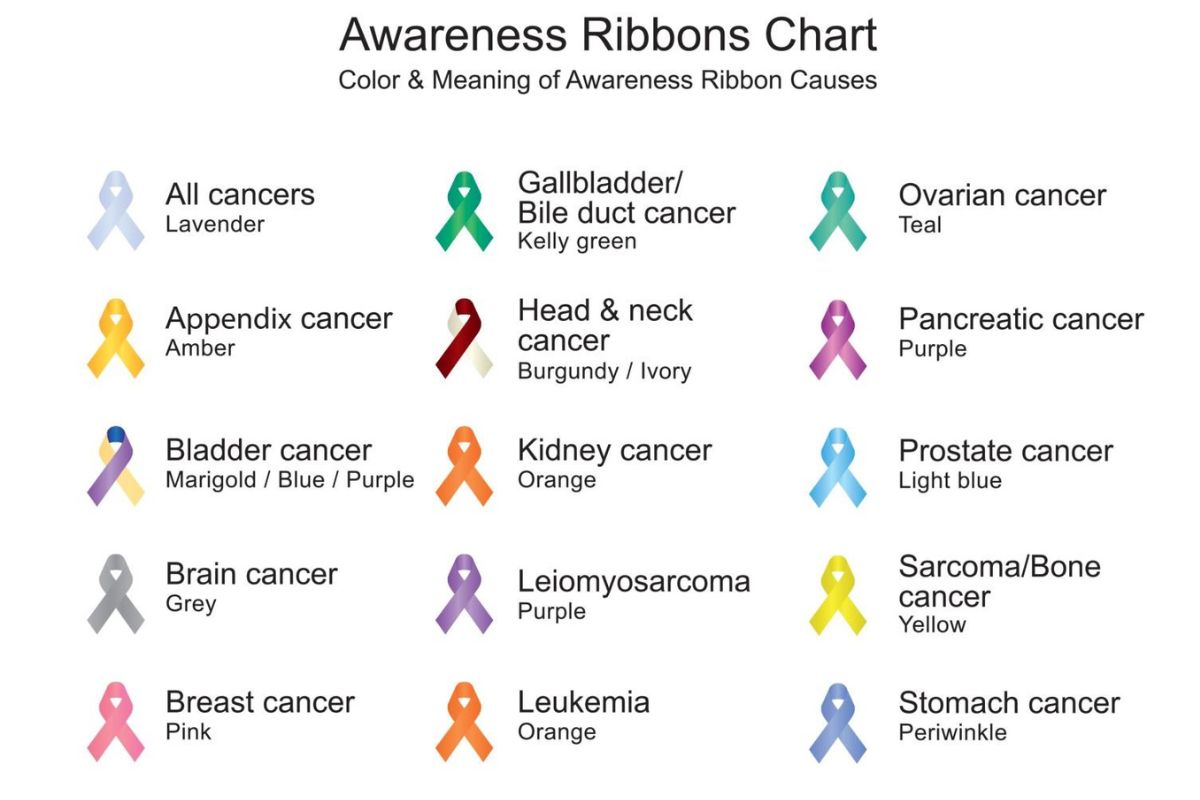
Awareness ribbons are symbols representing medical conditions, social causes, and other issues. Different colors correspond to specific diseases and causes, fostering awareness and support.
Red Ribbon
The Red Ribbon is a symbol for several important health issues, prominently for AIDS and HIV. It also stands for heart disease, stroke, and substance abuse.
Pink Ribbon
Breast cancer is most commonly associated with the Pink Ribbon. It serves as a reminder of support for those affected and the importance of breast health awareness.
Light Blue Ribbon
The Light Blue Ribbon denotes several causes, including prostate cancer, thyroid disease, and lymphedema.
Orange Ribbon
Leukemia, kidney cancer, and multiple sclerosis are diseases represented by the Orange Ribbon. It also brings attention to motorcycle safety and self-injury awareness.
Yellow Ribbon
Support for military forces, suicide prevention, and a range of health conditions such as bladder cancer and bone cancer are symbolized by the Yellow Ribbon.
Purple Ribbon
Pancreatic cancer, thyroid cancer, testicular cancer, and Alzheimer’s disease are among the conditions that the Purple Ribbon stands for. It also represents general cancer awareness.
Black Ribbon
The Black Ribbon is associated with mourning and remembrance. It’s recognized for melanoma and gun control advocacy.
White Ribbon
Lung cancer, bone disease, and osteoporosis are highlighted by the White Ribbon. It also symbolizes peace and victim’s rights.
Green Ribbon
Awareness for liver cancer, bipolar disorder, cerebral palsy, and Lyme disease are tied to the Green Ribbon. It also brings focus to kidney disease and environmental concerns.
Blue Ribbon
The Blue Ribbon signifies diverse issues including colon cancer, child abuse prevention, chronic fatigue syndrome, and Bullying prevention.
Periwinkle Ribbon
Diseases such as stomach cancer, esophageal cancer, and eating disorders are represented by the Periwinkle Ribbon.
Teal Ribbon
The Teal Ribbon is used to raise awareness for ovarian cancer, cervical cancer, sexual assault, and polycystic ovary syndrome (PCOS).
Lavender Ribbon
Being a color that represents all cancers, the Lavender Ribbon signifies general cancer awareness. It’s also linked to epilepsy, foster care, and rheumatoid arthritis.
Health Conditions and Disease Awareness
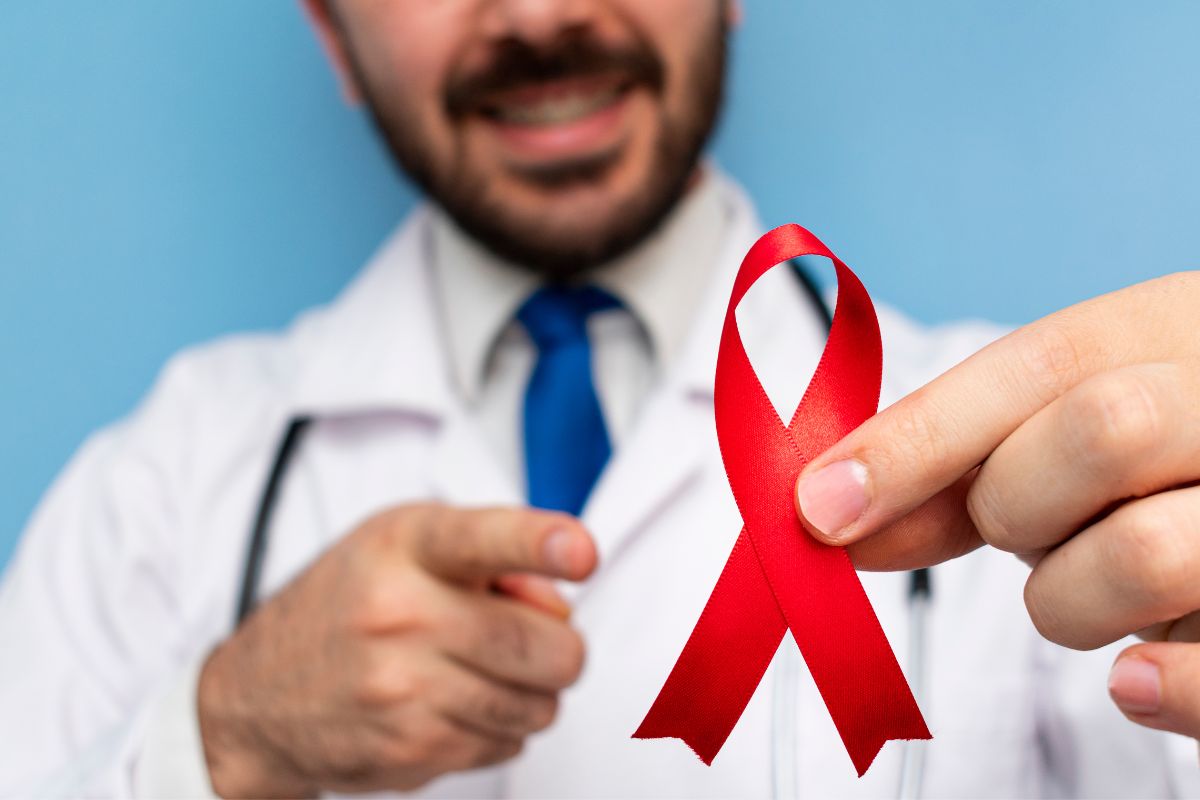
Awareness ribbons serve as a powerful symbol to show support and raise consciousness about various health conditions and diseases. Each color represents a different aspect of health advocacy, from cancer to mental health.
Cancer Awareness
- Breast Cancer: A pink ribbon brings attention to breast cancer, highlighting the necessity of research and support for those affected.
- Colon Cancer: March is designated as Colon Cancer Awareness Month, and wearing a dark blue ribbon symbolizes support and awareness.
- Pancreatic Cancer: Often represented by a purple ribbon, this symbolizes the fight against a particularly aggressive cancer.
- Prostate Cancer: A light blue ribbon stands for prostate cancer awareness and the importance of early detection.
- Cervical Cancer: Teal and white ribbons are used to support those with cervical cancer and stress the importance of preventive screenings.
Chronic Diseases
- Diabetes: Diabetes awareness is represented by a blue circle, and November is recognized as Diabetes Awareness Month.
- Asthma and Allergies: A gray ribbon is a symbol for asthma and allergies, diseases that significantly impact respiratory health.
Mental Health
- Depression and Bipolar Disorder: A green ribbon represents these conditions, emphasizing the need for understanding and support.
- Anxiety: Anxiety disorders, including OCD and PTSD, are signified by a teal ribbon.
- Suicide Awareness: The significance of mental health is further underscored with the yellow ribbon, symbolizing the importance of suicide prevention.
- Eating Disorders: Bringing attention to eating disorders, a periwinkle ribbon encourages support for recovery and education on these serious conditions.
Infectious Diseases
- HIV/AIDS: A red ribbon is universally recognized for HIV/AIDS awareness and supports the education and destigmatization surrounding this disease.
- Addiction and Addiction Recovery: Addiction is often represented by a black ribbon, while the symbol for recovery is a silver ribbon, promoting the message of hope and the journey towards healing.
By wearing these ribbons, I contribute to a larger conversation about health, foster empathy, and mobilize support for individuals and families combating these illnesses.
Awareness Ribbon Advocacy and Events

Awareness ribbons have become a universal symbol, promoting advocacy and uniting participants in events aimed at educating and fundraising. These vivid markers are instrumental in rallying support and amplifying the message of various health and social causes.
Awareness Campaigns
In the UK, and globally, awareness campaigns utilizing ribbons have a powerful impact on public consciousness. For instance, cancer awareness movements, notably breast cancer, frequently employ pink ribbons to symbolize solidarity and support. These campaigns are designed to foster a vast network of support, crossing physical and digital spheres, including social media platforms and websites with ‘.io’ extensions dedicated to health advocacy.
Awareness Months and Days
In the calendar year, there are specific months and days earmarked for heightened engagement and outreach. Breast Cancer Awareness Month in October and Mental Health Awareness in May are prime examples where colored ribbons come to the fore, drawing attention, spurring discussions, and consolidating communal and individual efforts towards these key health issues.
Fundraising and Charitable Activities
Colored ribbons are not only symbols but also fundraising linchpins. They’re sold or distributed at various events to collect donations for related causes. The funds raised are crucial for research, patient support, and educational resources. For instance, during breast cancer awareness events, pink ribbons denote both moral support for those affected and a means of raising significant funds for ongoing research and support services.
Educational Programs
The distribution of awareness ribbons often coincides with educational efforts, aiming to inform the public about symptoms, prevention, and treatment options. Health organizations and charities in the UK often distribute ribbons alongside informational materials, ensuring that the message of health and well-being resonates beyond the events and translates into informed actions and choices.
Design and Usage of Ribbons

Awareness ribbons have become a universal symbol for advocating and showing support for various causes. The ribbon’s color signifies the particular cause it represents, and they often come as pins, stickers, or digital icons.
Ribbon Symbols and Accessories
I recognize that the design of awareness ribbons is intentional, with each color carefully selected to represent a specific cause—red for HIV/AIDS awareness, for example. The ribbons may be adorned with additional symbols or accessories to further signify the cause, such as a heart for heart disease or an embellishment that represents a particular struggle or achievement.
Custom Ribbon Creation
Creating a custom ribbon involves selecting a meaningful color and sometimes combining colors to represent dual causes. For example, a half black and half blue ribbon might be used to show solidarity with individuals suffering from mourning and mental health respectively. The shape is typically a loop, which I believe symbolizes the ongoing fight and unity within the community.
Digital and Social Media Use
In the digital realm, I use awareness ribbons as images on websites, social media profiles, and as part of advocacy campaigns. These digital ribbons are often interactive, leading to more information about the cause or a donation page when clicked. The virtual nature of digital ribbons allows for widespread sharing, which I find effective for raising awareness and support quickly and internationally.
The integration of ribbons into merchandise like T-shirts or tote bags further extends the reach and impact of these symbols, offering a physical reminder of the cause and facilitating conversations in day-to-day interactions.
Global Perspective on Awareness Ribbons
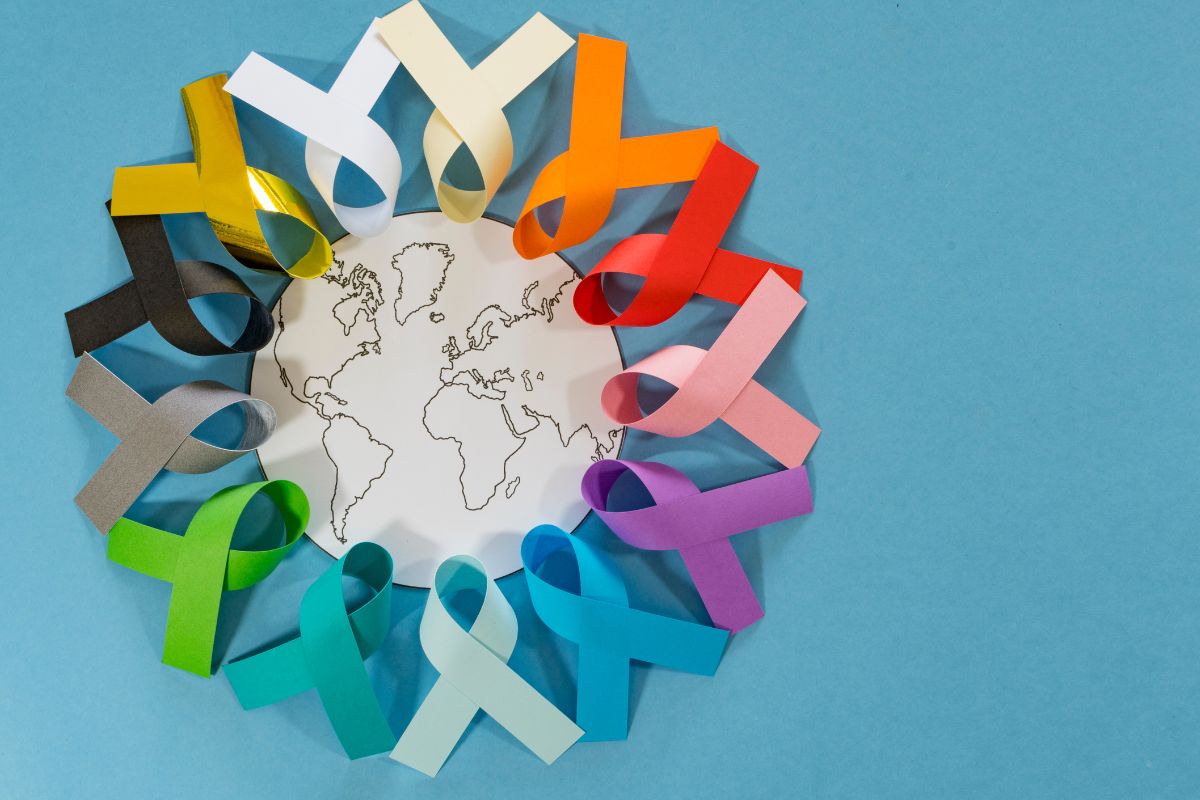
Awareness ribbons serve as a universal language of support and advocacy, transcending cultural and geographic boundaries. They signal solidarity and raise consciousness around pressing global health issues.
International Use and Recognition
Awareness ribbons are recognized internationally, with various colors symbolizing support for numerous causes. Globally, individuals and groups don these ribbons to draw attention to health issues that affect populations across borders. For instance, the pink ribbon is a widely acknowledged symbol for breast cancer awareness, evoking global unity and support. In the United Kingdom, wearing a pink ribbon during Breast Cancer Awareness Month connects citizens to a larger, world-spanning community of activists and survivors.
Addressing cervical cancer, the teal and white ribbon manifests support and promotes awareness. This disease affects women worldwide, and the ribbon serves as an emblem to advocate for screenings and vaccinations in many countries.
Similarly, colon cancer awareness is represented by a dark blue ribbon. This condition is a significant health issue that sees numerous global campaigns leveraging the emblem to increase visibility and encourage screenings that can save lives.
Apart from health issues, cultural diversity is also reflected in the array of awareness ribbons. Different cultures might attribute their unique meanings to certain colors, yet the intent to promote awareness and provide support remains a common thread.
I observe that recognition and usage of awareness ribbons have increased with global health initiatives actively using these ribbons as potent symbols to garner international support. Moreover, through social media and global campaigns, awareness ribbons have become integral tools in mobilizing support for critical issues and diseases that resonate across cultural and international lines.
Other Symbols of Support
In addition to awareness ribbons, various symbols and designs serve as emblems to promote and support different causes. I find that these alternative symbols can often reflect cultural diversity and hold significant meaning across various communities.
- Lapel Pins: A common alternative to ribbons, lapel pins offer a versatile range of designs, often incorporating symbols, logos, or flags relevant to specific causes.
- Bracelets: Silicone or fabric bracelets, sometimes bearing messages or icons, are worn to show solidarity. They come in various colors, each often signifying a distinct advocacy.
- Charms and Badges: Similar to lapel pins, charms and badges are designed with symbols related to causes and are used for accessorizing or as tokens of support.
Designs and Patterns: Some causes adopt unique designs or patterns instead of single colors. For example:
- Puzzle pieces commonly represent autism awareness, signaling the complexity of the condition.
- Stripes or camouflage patterns may denote support for military personnel.
I also observe that these supportive symbols take into account the diverse cultural representations and sensitivities, ensuring inclusive participation in the support of global causes. For instance, incorporating culturally significant colors or emblems into the design of support symbols can engage wider audiences and educate the public on the richness of diversity within social advocacy.
Future of Awareness Campaigns

In addressing the evolution of awareness campaigns, I’ll explore how technology, health trends, and emerging issues serve as catalysts for change. My focus will be on how these elements are reshaping the landscape for raising public consciousness on critical issues.
Technological Advancements
Technological innovation is rapidly transforming the way I communicate about and participate in awareness campaigns. I expect that as digital platforms evolve, there will be a greater use of interactive and immersive experiences, such as virtual reality (VR) and augmented reality (AR), to educate and engage a wider audience about various causes. Digital wearables and apps could potentially monitor participation and impact, providing real-time analytics on campaign reach and engagement.
- VR/AR: Immersive storytelling to enhance empathy and understanding.
- Wearables/Apps: Track engagement and measure campaign impact.
Trends in Public Health Awareness
Current trends in public health awareness are increasingly leaning towards preventive care and mental health. Recognizing global health issues, such as the rise of non-communicable diseases and mental health disorders, I see future campaigns focusing more on lifestyle changes and early detection. Utilizing social media for viral awareness tactics, campaigns can achieve unprecedented levels of public participation and education.
- Preventive Health Campaigns: Promote regular health screening.
- Mental Health: Increase visibility and reduce stigma.
Emerging Issues and Awareness
I’ve noticed that emerging causes, especially in the wake of epidemics, pivot quickly to harness global attention. Awareness campaigns are likely to concentrate on issues like climate change and its impact on health, antibiotic resistance, and the health implications of migration and displacement. These campaigns will need to adapt to changing realities and emerging information, ensuring they are providing accurate and timely data.
- Climate Change & Health: Highlight the intersection of environmental and public health.
- Antibiotic Resistance: Advocate for responsible use of antibiotics.
Frequently Asked Questions
Awareness ribbons serve as a visual representation to show support and bring about awareness for various causes. Each ribbon color corresponds to different issues and causes, aligning with specific movements and awareness campaigns.
What do different ribbon colors signify in awareness campaigns?
In awareness campaigns, ribbon colors signify diverse causes and conditions. For example, purple ribbons typically represent pancreatic cancer, Alzheimer’s disease, and epilepsy, while red ribbons are often tied to heart disease awareness, HIV/AIDS, and blood disorder awareness.
How are ribbon colors associated with specific months and their causes?
Ribbon colors are designated to represent specific causes during particular months. For instance, pink ribbons are widely recognized in October during Breast Cancer Awareness Month, and light blue ribbons are used in April for Autism Awareness Month.
What color represents mental health awareness?
Green ribbons are used to represent mental health awareness. Wearing a green ribbon signifies support for individuals living with mental health conditions and the ongoing efforts to destigmatize mental illness.
Which ribbon color is used to symbolize support for depression?
The color associated with depression awareness is a blue ribbon. This shade of ribbon indicates solidarity with those affected by depression and supports the broader conversation about mental health.
What is the meaning behind a black ribbon in awareness movements?
A black ribbon is commonly associated with mourning and remembrance. In awareness movements, it also represents support for individuals affected by tragedies such as terrorist attacks, POW/MIA recognition, and gun control advocacy.
Can you explain the significance of a teal-colored awareness ribbon?
A teal-colored awareness ribbon is a symbol for ovarian cancer awareness. Additionally, it represents support for other causes such as sexual assault and post-traumatic stress disorder.

